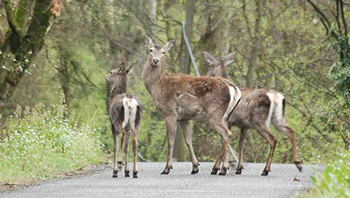Ashiq Hussain
SRINAGAR, Aug 3: The critically endangered red deer, hangul, has been sighted outside its protected zone in Kashmir, indicating that for the first time in five decades, its population is on the rise.
For 50 years, hanguls have been confined to Srinagar’s Dachigam national park. But in May, a female deer was spotted in Wangat-Naranag conservation reserve, at least 45 km from the park.
The news has brought cheer to conservationists, who fear that the animal may soon be extinct. “If any disease hits the hangul population in the park, they would be lost forever,” said Riyaz Ahmad of the J&K Project Lead for Wildlife Trust of India (WTI).
The hangul is the sole survivor of the red deer group in the sub-continent. Poached for its meat, antlers and skin, their numbers have been on the decline since 1940s. From around 3,000, the figure dropped to 900 in 1989. The next blow was dealt by the insurgency. As the militants and the army battled in forests, the hangul population dwindled to a mere 200.
In 2008, the Kashmir Department of Wildlife Protection began a survey jointly with the WTI to find if the hangul is spreading elsewhere. They focused on 36 sites between Pahalgam in south Kashmir and Kupwara near the LoC — the original habitat of the animal. From past records, interactions with locals, antlers and hoofmarks, hangul presence was predicted in 17 sites.
But this was the first time the survey yielded clinching evidence — an actual sighting.
“I saw the animal and caught it on camera,” said Mansoor Nabi Sofi, assistant project officer for the survey. “It was the first time hangul was seen outside Dachigam.”
(The author is correspondent, The Hindustan Times)










